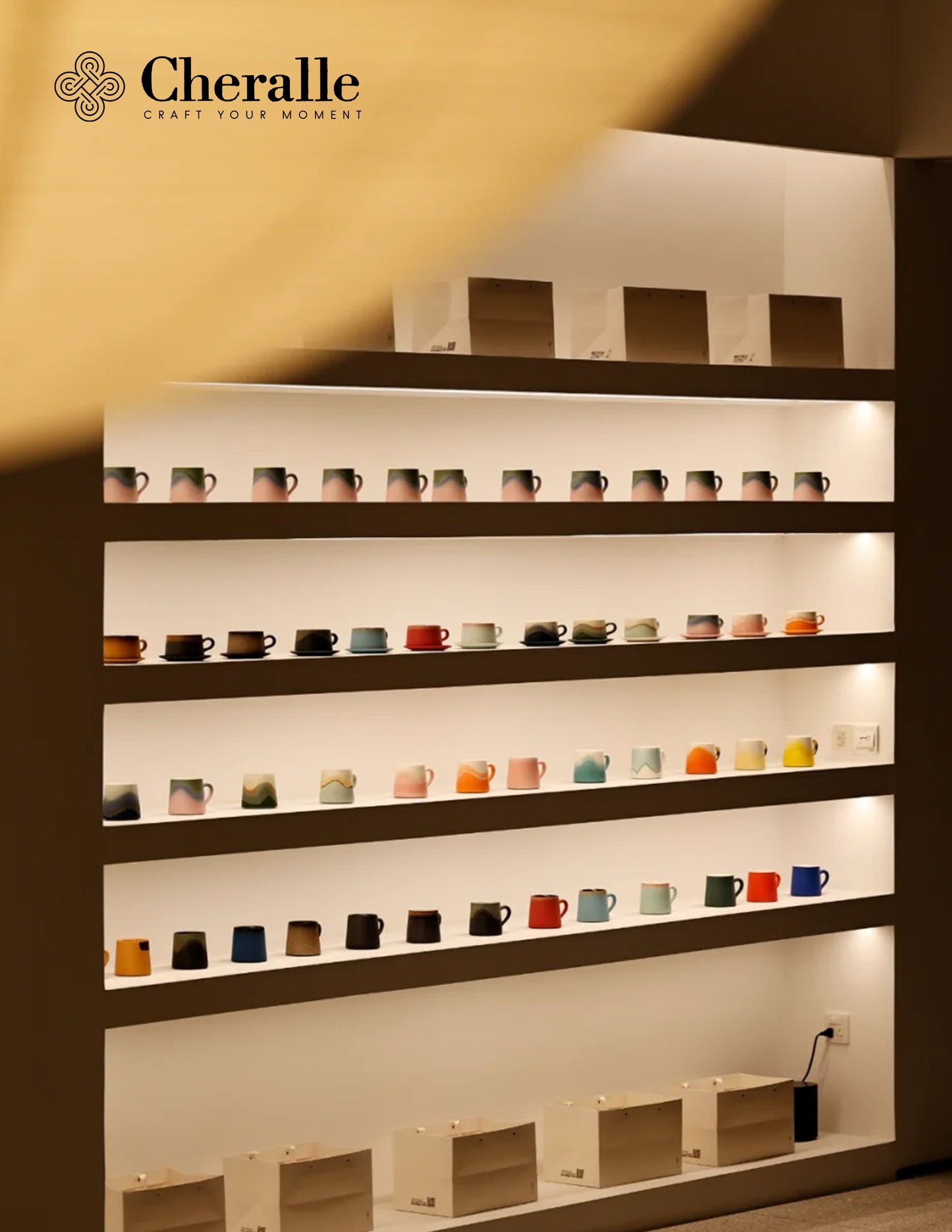
High-Fired vs. Low-Fired Ceramics: A Comprehensive Guide
Ceramics have been part of human culture for centuries, cherished for their beauty and utility. In modern production, high-fired ceramics and low-fired ceramics are two primary types, each offering unique qualities and applications. Understanding these distinctions can guide enthusiasts, artists, and buyers in making better choices.
What Are High-Fired and Low-Fired Ceramics?
What is High-Fired Ceramic?
Also known as stoneware or porcelain, high-fired ceramics are heated to temperatures above 1200°C (2192°F). The high firing temperature produces a dense, durable material with low porosity.
“High-firing techniques result in ceramics suitable for both artistic and industrial use.” – Britannica
What is Low-Fired Ceramic?
Fired between 700°C and 1000°C (1292°F to 1832°F), low-temperature pottery is renowned for its vibrant glazes and artistic versatility. These pieces are less dense but offer more creative flexibility in design.
Curious about the difference between stoneware and earthenware? Visit The Spruce.
High-Fired vs. Low-Fired Ceramics: Production Process
How Are High-Fired Ceramics Made?
The production of high-fired ceramics involves:
- Material Selection:High-quality clays like kaolin for heat resistance.
- Complex Firing Stages:Including bisque firing, glazing, and a final high-temperature kiln firing.
- Precision Techniques:Careful temperature control ensures product integrity.
For an in-depth look, check out this guide from Ceramic Arts Network.
How Are Low-Fired Ceramics Made?
Crafting low-fired products is simpler:
- Diverse Materials:A wider variety of clays can be used.
- Straightforward Firing:The process is less energy-intensive, making it ideal for small-scale production.
High-Fired vs. Low-Fired Ceramics: Physical Properties
Physical Benefits of High-Fired Ceramics
- Sturdy and Dense:Minimal water absorption (≤0.5%) ensures long-lasting durability.
- Thermal Resistance:Excellent for handling hot beverages or industrial heat.
- Chemical Resistance:Withstands wear and chemical exposure.
Physical Features of Low-Fired Ceramics
- Lightweight and Porous:Higher water absorption (≈10%) makes it less durable.
- Bright Colors:Firing at lower temperatures preserves vibrant glaze finishes.
- Less Durable:Best suited for decorative purposes.
Learn more about ceramic durability at ScienceDirect.
High-Fired vs. Low-Fired Ceramics: Aesthetic Appeal
Why High-Fired Ceramics Look Elegant
- Sophisticated Finish:Offers smooth surfaces with stable glaze tones.
- Design Versatility:Produces glossy, matte, or satin finishes suitable for elegant use.
Why Low-Fired Ceramics Are Vibrant
- Artistic Charm:Known for vivid, textured finishes and intricate underglaze designs.
- Rustic Appeal:Perfect for handmade or decorative ceramics.
Explore inspiring ceramic collections at Cheralle
Applications: Where High-Fired and Low-Fired Ceramics Excel
Uses of High-Fired Ceramics
High-fired ceramics are essential in everyday items like:
- Coffee Mugs:Retain heat and resist staining, making them a favorite for coffee lovers.
- Kitchenware:Ideal for dishes, bowls, and bakeware.
- Industrial Use:Found in electronics and high-heat environments.
For example, our premium ceramic coffee mugs combine aesthetic appeal with functionality. Their dense, durable design ensures that every cup of coffee stays warmer, longer. Check out our collection here.
Best Applications for Low-Fired Ceramics
Low-fired ceramics are perfect for:
- Home Décor:Vases, sculptures, and wall art.
- Creative Pieces:Suitable for unique and personalized designs.
For a deeper dive into ceramic applications, visit World Ceramic Tiles.
High-Fired vs. Low-Fired Ceramics: Cost & Sustainability
Are High-Fired Ceramics Worth the Cost?
- Higher Costs:Energy-intensive processes and specialized materials increase production expenses.
- Sustainable Longevity:Durability reduces waste over time, balancing environmental impact.
Are Low-Fired Ceramics Eco-Friendly?
- Affordable Production:Lower energy consumption and simpler techniques make these ceramics more accessible.
- Shorter Lifespan:May require replacement more frequently, increasing waste potential.
Learn about sustainable ceramic practices at Ceramics.org.
Market Trends for High-Fired and Low-Fired Ceramics
Growing Demand for High-Fired Ceramics
The market for stoneware coffee mugs and industrial-grade ceramics is growing, driven by a desire for durable, eco-friendly, and high-quality products.
Increasing Popularity of Low-Fired Pottery
Personalized home décor and small-batch ceramics highlight the artistic value of low-temperature pottery.
Stay informed about market trends at Statista.
Conclusion: Choosing the Right Ceramic for Your Needs
Both high-fired ceramics and low-fired ceramics bring unique advantages to the table. High-fired ceramics shine in durability and functionality, making them ideal for mugs, cookware, and industrial uses. Meanwhile, low-fired pottery stands out for its artistic versatility and affordability.
Whether you're shopping for a durable coffee mug or a decorative vase, understanding the benefits of these ceramics can help you make the right choice. Explore our collection of high-quality stoneware coffee mugs.
